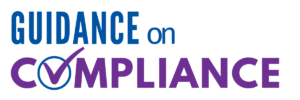Does your documentation match your moderate level of service billed?
With the changes implemented by the American Medical Association (AMA) and the Centers for Medicare & Medicaid Services (CMS), it is very important to make sure your documentation matches the level of service you are billing. Many providers are finding themselves billing more moderate level of service visits now than they did previously under the old guidelines.
Criteria for Code Selection
To achieve a moderate level of service, at least 2 out of the 3 following criteria must be met for the encounter:
Moderate Complexity and/or number of problems addressed (COPA):
- 1 or more chronic illnesses with exacerbation, progression, or side effects of treatment; or
- 2 or more stable, chronic illnesses; or
- 1 undiagnosed new problem with uncertain prognosis; or
- 1 acute illness with systemic symptoms; or
- 1 acute, complicated injury
Data Requirements:
The data must meet a moderate level of service requirements. This involves meeting at least one of the three categories below:
- Category 1: Tests and documents
- Any combination of 3 from the following:
- Review of prior external note(s) from a unique source*
- Review of the result(s) of each unique test*
- Ordering of each unique test*
- Assessment requiring an independent historian(s)
- Any combination of 3 from the following:
- Category 2: Independent interpretation of tests
- Independent interpretation of a test performed by another physician/other qualified healthcare professional (not separately reported)
- Category 3: Discussion of management or test interpretation
- Discussion of management or test interpretation with external physician/other qualified healthcare professional/appropriate source (not separately reported)
Risk Considerations:
Moderate risk of morbidity from additional diagnostic testing or treatment requirements. Examples include:
- Prescription drug management
- Decision regarding minor surgery with identified patient or procedure risk factors
- Decision regarding elective major surgery without identified patient or procedure risk factors
- Diagnosis or treatment is significantly limited by social determinants of health
A moderate level of service requires a comprehensive evaluation of the patient’s condition, data requirements, the complexity of medical decision-making, and the risk of complications or morbidity. By understanding and applying these criteria, healthcare providers can ensure accurate and appropriate coding, leading to better patient care and compliance with regulatory standards.
Definitions
- Stable, chronic illness: A problem with an expected duration of at least one year or until the death of the patient. For the purpose of defining chronicity, conditions are treated as chronic whether or not stage or severity changes. “Stable” is defined by the specific treatment goals for an individual patient. A patient who is not at their treatment goal is not stable, even if the condition has not changed and there is no short-term threat to life or function.
- Chronic illness with exacerbation, progression, or side effects of treatment: A chronic illness that is acutely worsening, poorly controlled, or progressing with an intent to control progression and requiring additional supportive care or attention to treatment for side effects.
- Undiagnosed new problem with uncertain prognosis: A problem in the differential diagnosis representing a condition likely to result in a high risk of morbidity without treatment.
- Acute illness with systemic symptoms: An illness that causes systemic symptoms and has a high risk of morbidity without treatment. For systemic general symptoms, such as fever, body aches, or fatigue in a minor illness that may be treated to alleviate symptoms, see the definitions for self-limited or minor problem or acute, uncomplicated illness, or injury. Systemic symptoms may not be general but may be single-system.
- Acute, complicated injury: An injury that requires treatment that includes evaluation of body systems that are not directly part of the injured organ, the injury is extensive, or the treatment options are multiple and/or associated with risk of morbidity.
LW Consulting, Inc. (LWCI) offers a comprehensive range of services that can assist your organization in maintaining compliance, identifying trends, providing education and training, or conducting documentation and coding audits. For more information, contact LWCI to connect with one of our experts!


